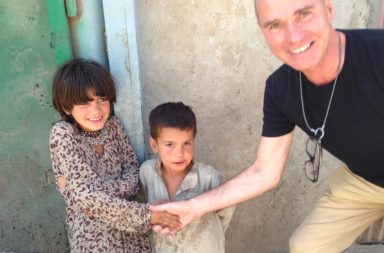The history of carpet weaving in Afghanistan is considered to have started five to six thousand years BC in the land of Bakhtar and Central Asia.
From past to present, Central and Northern Afghanistan have been considered the most important centers of carpets; the carpets which are known to be unrivaled across the world.
These rugs are mostly assembled in the Northern part of Afghanistan by various ethnic groups, but mostly by those of Turkmen ethnicity.
The Afghan carpet is a type of hand-woven floor-covering textile traditionally made in the suburbs of the country. Many of the Afghan Carpets are also woven by the Afghan refugees who reside in Pakistan and Iran. According to the reports, Afghan carpets won international awards several times; in 2008, 2009 and 2014. Award presentations take place in Hamburg, Germany every year.
According to the carpet traders, there are more than 100 carpet or rug producing companies inside Afghanistan which are mostly active in the Northern part of the country.
Carpet is also known as a good source of income for the country of Afghanistan.
The worthiness of Afghan carpet is owed to its quality and the quality to the long term history of weaving in this country, says Juma Khan, an Afghan Carpet seller in Kabul. He adds “our carpet has got the first position in the world market not only once, but many times which makes us be proud on our carpet production.”
Juma Khan also says that since Afghan Carpet is very precious, even Afghan kings were offering carpets to their counterparts as souvenir in the past. According to Juma Khan, Afghan carpets are woven in more than 80 designs by Turkmen and Kazaks in Mazar-e-Sharif, Bamyan, Jawzjan, Faryab and other cities.
Recently, in a rug exhibition held in Dubai, UAE, among 14 countries, Afghan rugs achieved the first position considering the color, design and quality which was seen as a great achievement for the people in this country.
Yet, Abdurrahim Saidi, Afghanistan’s head of the private sector in the Ministry of Commerce and Industry names Afghanistan’s carpets as the country’s symbol of identity and culture. He said that the private sector should function professionally to attract international markets for production of the Afghan carpet.
According to Mr. Saidi, there are some markets in South Asia, China and Latin America where the Afghan rugs are warmly recognized and welcomed by traders.
Abdul Malik, another carpet seller in Mazar-e-Sharif says that unfortunately most of the Afghan carpets dealing in the international markets are being sold as made in other countries while they are made by Afghans which is not good for the reputation of Afghanistan, and the credit for the quality of the carpet goes to another country. He believes that it is not easy to avoid it, as the carpet weavers are living those countries.
Between the 1979 and 1992 at least one million Afghans, including hundreds of thousands of rug-weavers, fled Afghanistan during its war with the Soviet Union and subsequent civil war, settling especially in Pakistan and Iran.
Two of the most popular carpets from Afghanistan are Khal Mohammadi and Aqcha which are handmade by the Turkmens of Afghanistan and in some cases they can also be hand knotted in Pakistan by the same ethnicity who crossed over the borders into Pakistan years ago.
The primary colors are dark red in different nuances. Occurring motifs are Gols (elephant like patterns) and octagonal (eight shaped) often with curvilinear flowers in dark blue, ochre and beige.
According to the commerce and industries officials in Afghanistan, exporting Afghan carpet has decreased nowadays compared to the previous years. Mirzaman Popal, head of the development section in the Ministry of Commerce and Industries in Afghanistan said that there are two reasons behind the declining export of Afghan carpets; external and internal reasons. The external reason is the global crisis and the internal reason is the lack of carpet processing factories inside the country.
Officials in the Ministry of Commerce and Industries added that in the past there were nearly 6 million Afghans weaving carpets, but due to the aforementioned reasons, the figure has dropped significantly.
Afghan carpets are solid, durable and often charming; they reflect the heritage of cottage-based craftsmanship passed down through generations of families. Most of the carpets have more in common with the tribal weavings of Central Asia in terms of color, design and weave than with their sophisticated Persian counterparts.
Also, most Afghan carpet weavers make carpets that are similar to those they have woven for decades. Their carpets are often woven on small portable looms and are mainly produced to adorn the tents they live in.
Afghanistan has got a high potential of human resources and most of them are youths who are hard workers and eager to work and they are in need of employment which should be provided by the government, providing carpet machines could enroll some of them to get employed.
If proper attention over carpet weaving is paid by the Afghan government, the carpet industry will have impressive growth. Government can also encourage Afghan and international private sectors to invest if the facilities are provided for the entrepreneurs.
Despite the quality and designs of Afghan carpet, if more effort was put in introducing the Afghan carpets in the Global Markets, the carpets will go global, which could result in enormous revenue for the country of Afghanistan.
Photo Credit: USAID. via Wikimedia




